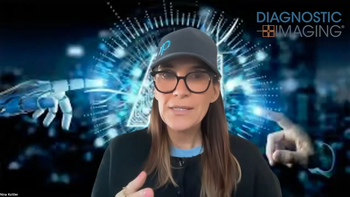
Report from ARRS: Lifestyle factors drive imaging departments into wings of nighthawks
Radiologists’ desire to sleep at night and avoid call is more likely to drive demand for after-hours teleradiology services than is a need for extra personnel, according to a small survey of imaging department heads presented at the American Roentgen Ray Society meeting on Tuesday.meeting on Tuesday.
Radiologists' desire to sleep at night and avoid call is more likely to drive demand for after-hours teleradiology services than is a need for extra personnel, according to a small survey of imaging department heads presented at the American Roentgen Ray Society meeting on Tuesday.
The survey, conducted at Yale University School of Medicine, was distributed to 300 randomly selected hospitals. Of those contacted, 115 responded to the 59-question poll, which asked about utilization and rationales for using nighthawk-type services. Of the respondents, 63 (54%) reported using some degree of after-hours outsourcing.
Lifestyle factors such as the desire to sleep at night were more important than cost cutting or the need to meet excess demand.
"Convenience seems to be the dominant factor. Lifestyle issues received higher mean scores than necessity," said presenter Adam Kaye, a medical student at Yale.
The wish to make the radiology practice more attractive to incoming radiologists also ranked high on the respondents' lists of driving factors.
The survey revealed a strong preference for outsourcing wet reads as opposed to final interpretations. Most respondents explained that they want their own radiologists to have the ultimate responsibility. Other possible reasons scored low on the list.
"It's possible that other reasons underlie this desire for responsibility of coverage. For example, one could argue that practices desire to minimize loss of revenues," Kaye said.
Although a high percentage of practices are making use of teleradiology services, the volume does not appear to be very high. Half of the nighthawk using practices send out 1% to 5% of studies, and 22% dole out less than 1% to after-hours readers. Another 14% of respondents were in the 6% to 10% range.
Payment for services comes to 100% of reimbursement in 40% of practices surveyed. Another 17% paid from 26% to 50% of the amount collected.
The study also showed that 25 of the 63 practices that outsourced some reading (about 40%) contracted an international rather than a domestic nighthawk. About 10 of the practices that went global did not know whether U.S. radiologists were reading the films. Over 50% said that the radiologists reading internationally were either all or mostly from the U.S. One respondent reported that about half of the chosen nighthawk's radiologists were from the U.S.
Most radiology departments (62%) were covering the whole cost of nighthawk services. In the remaining cases, hospitals covered all or part of the cost.
"There is a wide range of payment structures in hospitals for nighthawk services. It will be interesting to see how this evolves as hospitals become more comfortable with, or see greater necessity for, these services, particularly in view of radiologist shortages," Kaye said. "Teleradiology is evolving. As more practices begin to use nighthawks, acceptance of this model could increase and lead to more extensive utilization. In an ideal world, this could bring more teleradiology vendors, more competition, lower costs for customers and, hopefully, increased quality."
Newsletter
Stay at the forefront of radiology with the Diagnostic Imaging newsletter, delivering the latest news, clinical insights, and imaging advancements for today’s radiologists.




























